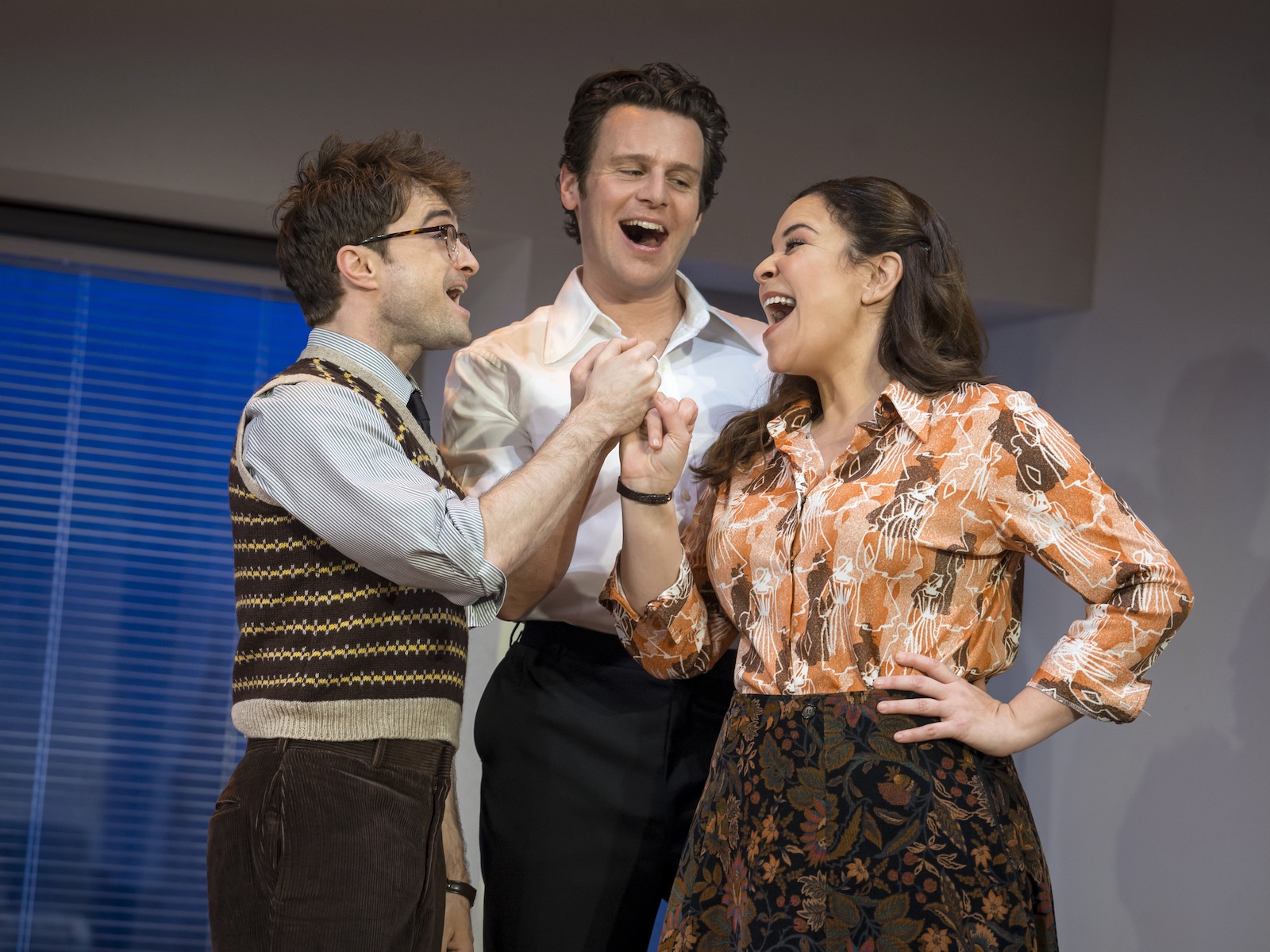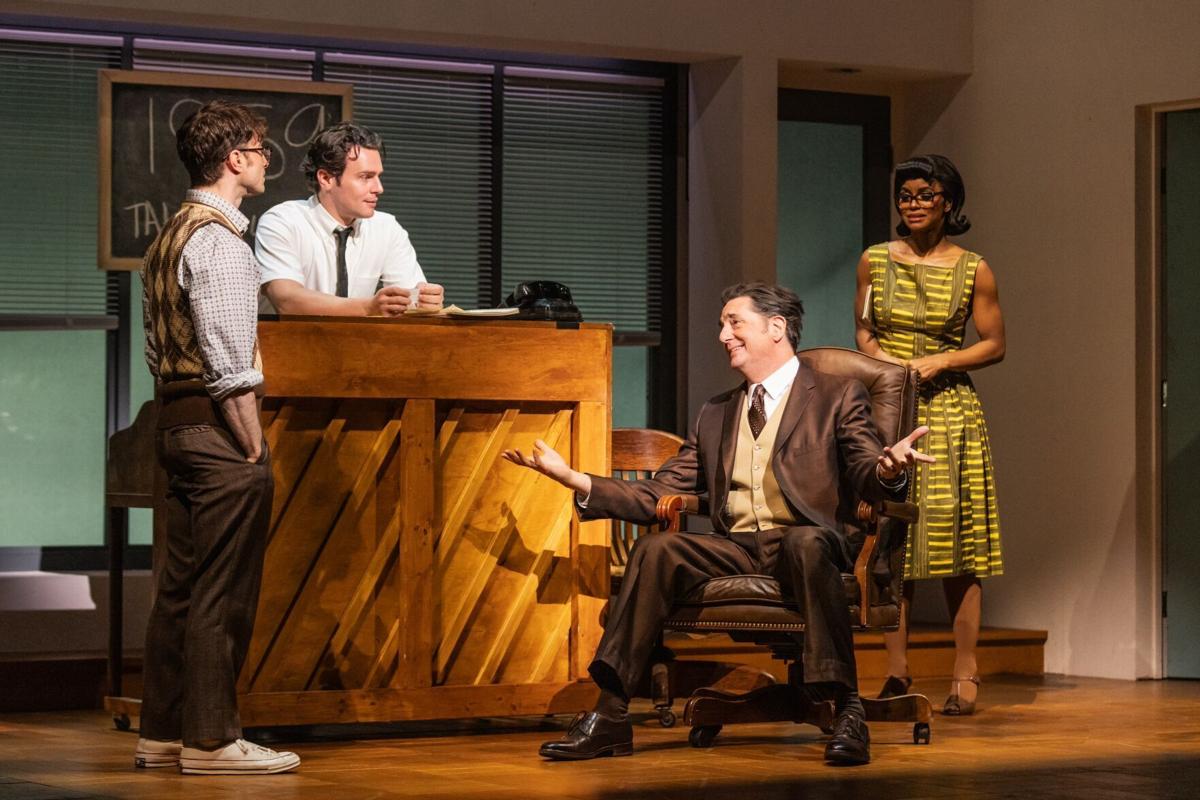Historical Context
Merrily We Roll Along, a groundbreaking musical by Stephen Sondheim and George Furth, premiered in 1981. It stands as a significant work in American musical theater, both for its innovative structure and its exploration of social and political themes.
The play is set against the backdrop of the American Dream, exploring the complexities of success, ambition, and the sacrifices people make in pursuit of their goals. It delves into themes of friendship, loyalty, and the changing nature of relationships over time.
Social and Political Themes
Merrily We Roll Along reflects the social and political climate of the 1960s and 1970s, a time of significant cultural and political upheaval. The play critiques the materialism and consumerism that had come to define the American Dream, as well as the disillusionment and cynicism that followed the Vietnam War.
- The American Dream: The play explores the complexities of the American Dream, showing how it can both inspire and corrupt. The characters’ pursuit of success often comes at the expense of their relationships and values.
- Materialism and Consumerism: The play critiques the materialism and consumerism that had come to define the American Dream. The characters’ obsession with wealth and status leads them to make compromises and sacrifices that they later regret.
- Disillusionment and Cynicism: The play reflects the disillusionment and cynicism that followed the Vietnam War. The characters’ idealism and optimism are gradually replaced by a sense of hopelessness and despair.
Character Analysis: Merrily We Roll Along

The characters in “Merrily We Roll Along” are complex and well-developed, each with their own unique motivations, relationships, and transformations. Their individual journeys contribute to the overall themes and message of the musical, exploring the complexities of friendship, ambition, and the choices we make in life.
Frank Shepard
Frank Shepard is the protagonist of the musical, a talented composer who dreams of writing a great American musical. He is ambitious, driven, and passionate about his work, but he also struggles with self-doubt and a fear of failure. As the musical progresses, we see Frank make a series of choices that ultimately lead to the loss of his friends and the destruction of his dreams.
Mary Flynn
Mary Flynn is Frank’s wife, a beautiful and talented actress. She is supportive of Frank’s dreams, but she also has her own ambitions and aspirations. As the musical progresses, we see Mary grow increasingly frustrated with Frank’s obsession with his work and his neglect of their relationship. She eventually leaves him, seeking a life that is more fulfilling.
Charley Kringas
Charley Kringas is Frank’s best friend, a witty and charming lyricist. He is loyal to Frank and supports his dreams, but he also has his own insecurities and fears. As the musical progresses, we see Charley become increasingly disillusioned with the music business and with Frank’s ambition. He eventually leaves Frank and the musical, seeking a life that is more meaningful.
Gussie Carnegie
Gussie Carnegie is a wealthy socialite and patron of the arts. She is a generous and supportive friend to Frank and Mary, but she is also manipulative and controlling. As the musical progresses, we see Gussie become increasingly possessive of Frank and his work. She eventually turns against him, using her influence to destroy his career.
Beth Spencer
Beth Spencer is a young actress who becomes Frank’s muse. She is beautiful, talented, and ambitious, and she quickly becomes a star. As the musical progresses, we see Beth become increasingly corrupted by the fame and fortune that come with success. She eventually betrays Frank, selling out to Gussie and destroying his dreams.
Musical Elements

The musical score of “Merrily We Roll Along” is a complex and innovative work that plays a vital role in conveying the story and characters. Composer Stephen Sondheim uses a variety of musical devices to create a cohesive and emotionally resonant soundscape that enhances the emotional impact of the narrative.
One of the most striking features of the score is its use of leitmotifs, or recurring musical themes associated with specific characters or ideas. For example, the character of Franklin Shepard is associated with a soaring, optimistic melody that represents his youthful idealism. As the story progresses and Franklin becomes disillusioned, his leitmotif becomes more fragmented and dissonant, reflecting his inner turmoil.
Counterpoint and Polyphony
Sondheim also makes extensive use of counterpoint and polyphony, creating complex and intricate musical textures that mirror the interwoven relationships between the characters. In the opening number, “Merrily We Roll Along,” the four main characters sing in a lively round, symbolizing their youthful camaraderie. However, as the story progresses and their relationships become strained, the round becomes more fragmented and dissonant, reflecting the growing tensions between them.
Comparison to Other Musicals, Merrily we roll along
The musical style of “Merrily We Roll Along” is unique among musicals of its era. Unlike many other musicals that rely on catchy melodies and simple harmonies, Sondheim’s score is more complex and dissonant, reflecting the show’s dark and introspective themes. The use of leitmotifs, counterpoint, and polyphony creates a rich and sophisticated musical soundscape that enhances the emotional impact of the story.